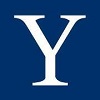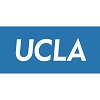专业详情
Computing and the Arts is an interdepartmental major designed for students who wish to integrate work in computing with work in one of five arts disciplines: architecture, art, history of art, music, or theater studies.
For students with a computing perspective, issues in these disciplines present interesting and substantive problems: how musicians use computers to compose; the limitations of current software tools used by artists; the types of analyses done by art historians; challenges in designing and using virtual sets in the theater; ways that virtual worlds might help to envision new forms of artistic expression; and lessons that can be learned from trying to create a robotic conductor or performer.
For students with an artistic perspective, computing methods offer a systematic approach to achieving their vision. A foundation in computer science allows artists to understand existing computing tools more comprehensively and to use them more effectively. Furthermore, it gives them insight into what fundamentally can and cannot be done with computers, so they can anticipate the future development of new tools for computing in their field.
Prerequisites
The prerequisite for all students in the major is either CPSC 100 or CPSC 112, which should be taken during the first year. There are two additional prerequisites for the Art track, ART 111 and 114. There are two additional prerequisites for the Theater and Performance Studies track, THST 110 and 111. There are no additional prerequisites for the Architecture track, the History of Art track, or the Music track. There is no required favorable review of studio work for admission to the major in any track, but a sophomore review advising session is required for the Art track.
Requirements of the Major
Twelve term courses are required beyond the prerequisites, not including the two-term senior project. Six of the courses must be in Computer Science, including CPSC 201, 202, and 223. Students are advised to complete CPSC 202 and 223 by the end of the sophomore year. MATH 244 may be substituted for CPSC 202. The six remaining courses are selected from one of the arts disciplines. Students choose a track in architecture, art, history of art, music, or theater and performance studies. All requirements for a single track must be satisfied, as specified below.
The Architecture track requires the following courses in addition to the Computer Science courses listed above: (1) ARCH 150 and 200; (2) two courses from ARCH 260, 312, 360, and 362; (3) two elective courses from either of the two concentrations: Design; or History, Theory, Criticism of Architecture, and Urbanism; (4) two courses from CPSC 376, 437, 446, 451, 475, 478, 479, or 484; and (5) one additional intermediate or advanced CPSC course (excluding CPSC 490).
The Art track requires the following courses in addition to the Computer Science courses listed above, as well as a sophomore review at the School of Art: (1) two 100-level courses beyond ART 111 and 114, such as ART 132 or 184; (2) two courses in Art at the 200 or 300 level, such as ART 285 or ART 369; (3) ART 395 or ART 301; (4) one course in Art at the 400 level, such as ART 495; (5) two courses selected from CPSC 376, 437, 446, 451, 475, 478, 479, or 484; (6) one additional intermediate or advanced Computer Science course (excluding CPSC 490). Seniors following the art track will have access to a shared studio and many facilities in the School of Art.
The History of Art track requires the following courses in addition to the Computer Science courses listed above: (1) one introductory, 100-level, History of Art course; (2) two History of Art courses at the 200, 300, or 400 level (the courses must represent two different areas as defined in the History of Art program description); (3) one studio art course (students may need to take a prerequisite course in Art to prepare for the studio course); (4) HSAR 401; (5) one 400-level seminar in History of Art; (6) two courses selected from CPSC 376, 437, 451, 475, 478, or 479, one of which must be CPSC 478 or 479; (7) one additional intermediate or advanced Computer Science course (excluding CPSC 490).
The Music track requires the following courses in addition to the Computer Science courses listed above: (1) MUSI 315; (2) five term courses chosen from MUSI 231, MUSI S290, 320, 321, 409, 414, 415, 420, 421, 425, 481, 495; (3) CPSC 431; (4) CPSC 432; (5) one additional intermediate or advanced Computer Science course (excluding CPSC 490).
The Theater and Performance Studies track requires the following courses in addition to the prerequisites and Computer Science courses listed above: (1) two courses in the Artistic Practice domain; (2) two courses in the Histories domain; (3) two courses in the Performance Theory domain; (4) CPSC 431 or 432; (5) CPSC 478, 479, or 484; (6) one additional intermediate or advanced Computer Science course (excluding CPSC 490).
Credit/D/Fail Courses taken Credit/D/Fail may not be counted toward the major.
Senior Requirement
The senior project requires two terms: one term of CPAR 491, and one term of ARCH 491, ART 496, HSAR 499, one from MUSI 496–499, or THST 471 or 491, depending on the track chosen. The project must be approved by the DUS and be acceptable to both departments. Students must submit a written report, including an electronic abstract and webpage(s).
Advising and Approval of Program
The entire program of each student majoring in Computing and the Arts must be approved by the DUS.


